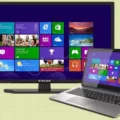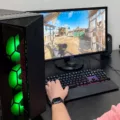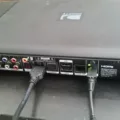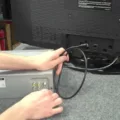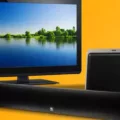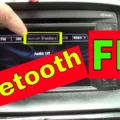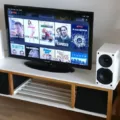Radio Frequency (RF) is a type of input terminal found on most televisions that transmits both audio and video signals. It is also known as the coaxial input or cable input and is commonly used to connect an indoor or outdoor antenna or cable for cable TV service.
The RF input terminal is typically located on the back of the television and is identified by a threaded metal connector that allows for the attachment of a coaxial cable. This cable is used to transmit the audio and video signals from the antenna or cable service provider to the television.
In addition to the RF input terminal, some televisions also feature a Radio Frequency out (RF out) port. This port is typically found on set-top boxes, VCRs, and DVD players, and is used to output analog video signals to older TVs that do not have composite or component video inputs.
To use the RF input on your TV, simply connect the coaxial cable from your antenna or cable service provider to the RF input terminal on the back of your television. Once connected, you can tune your television to the appropriate channel to view your favorite broadcast TV stations.
It is important to note that while RF inputs are still commonly found on televisions, newer models may feature alternative input options such as HDMI or USB. These inputs offer higher-quality audio and video signals and may be a better choice for connecting newer devices such as gaming consoles, streaming devices, and Blu-ray players.
The RF input terminal is a common feature found on most televisions and is used to transmit audio and video signals from an antenna or cable service provider. While it may be a convenient option for watching broadcast TV stations, newer input options such as HDMI and USB may offer better quality audio and video signals for newer devices.
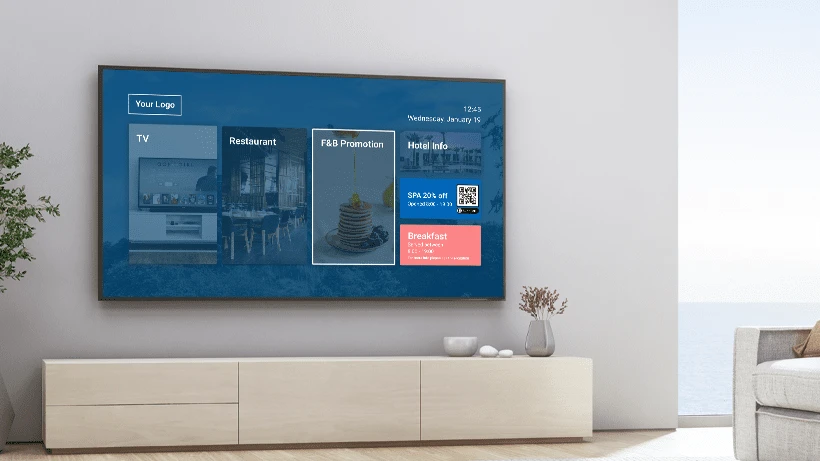
What Is an RF Cable and How Does It Relate to Smart TVs?
The RF cable on a smart TV is a type of input terminal that allows for the transmission of audio and video signals. Also known as a coaxial cable, this type of connection is typically found on the VHF/UHF and CABLE jacks of a smart TV. The RF cable can be used to connect an indoor or outdoor antenna or cable TV service, providing a means for receiving and transmitting audio and video content. This type of connection is commonly used in situations where a wired connection is preferred over a wireless connection, as it provides a more stable and reliable signal. the RF cable is an important component of many smart TVs, allowing users to access a wide range of audio and video content with ease.
What is the Meaning of ‘RF Out’ on a TV?
RF out on a TV refers to a coaxial socket located on the back of the TV that outputs an analog video signal through a radio frequency (RF) cable. This signal can then be transmitted to other devices such as set-top boxes, VCRs, or DVD players that also have RF inputs. The RF out feature is particularly useful for older TVs that do not have composite or component video inputs. The signal transmitted through the RF out socket is typical of lower quality compared to other video output options, but it can still provide a decent viewing experience. RF out on a TV allows you to connect the TV to other devices that use RF cables for video transmission.
The Relationship Between RF and Antenna
In the context of television broadcasting, RF (Radio Frequency) does mean antenna. An antenna is a device that converts electric power into electromagnetic waves that can be transmitted through the air. In the case of television broadcasting, the antenna receives the RF signal from the broadcasting station and converts it into a TV signal that can be displayed on the TV screen. Therefore, the RF input on a TV set is the antenna input, and it is used to receive over-the-air TV broadcasts.
Conclusion
RF (Radio Frequency) is a type of connection found on most TVs that allows for the transmission of both audio and video signals. This is typically used to connect an indoor/outdoor antenna or cable for cable TV service. Additionally, some older TVs may require an RF input to receive analog video signals from set-top boxes, VCRs, or DVDs. It is important to note that RF technology has been around for quite some time and is still widely used today. So, if you are looking to connect your TV to an antenna or cable service, be sure to check if your TV has an RF input available.

